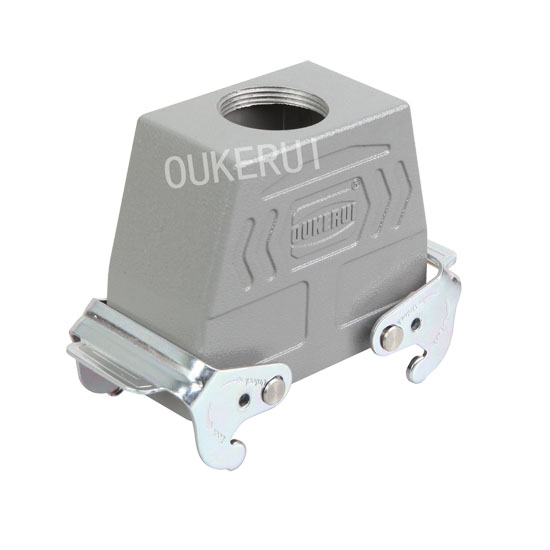Resilient Guardians: How Heavy Duty Connector Hoods Tackle Vibrations and Mechanical Stresses
2024-04-12
In the dynamic and demanding landscape of industrial environments, electrical connections are subjected to a myriad of challenges, including vibrations, shocks, and mechanical stresses. Heavy Duty Connector (HDC) hoods emerge as stalwart guardians, equipped to handle these rigors and ensure the reliability and longevity of critical electrical connections. Let's delve into how HDC hoods effectively manage vibrations and mechanical stresses in industrial applications.
1. Sturdy Construction
Heavy Duty Connector hoods are engineered with robust construction and durable materials that withstand the impacts of vibrations and mechanical stresses. Whether made from rugged plastics, metals, or composite materials, HDC hoods offer structural integrity and resilience, providing a secure enclosure for electrical connections in dynamic and high-stress environments.
2. Secure Locking Mechanisms
HDC hoods feature secure locking mechanisms that keep connectors firmly in place, even in the presence of vibrations and mechanical shocks. Whether using latch locks, screw locks, or bayonet locks, these mechanisms ensure that connectors remain securely fastened within the hood, preventing accidental disconnection and maintaining reliable electrical continuity.
3. Vibration-Resistant Designs
To mitigate the effects of vibrations on electrical connections, HDC hoods incorporate vibration-resistant designs and features. These may include internal locking mechanisms, strain relief structures, and vibration-dampening materials that absorb and dissipate vibration energy, reducing the risk of connector loosening or disconnection due to mechanical stress.
4. Cable Strain Relief
Proper strain relief is essential for preventing cable damage and maintaining the integrity of electrical connections under mechanical stress. HDC hoods often include built-in cable strain relief features such as clamps, tie-down points, and strain relief modules that secure and support cables, minimizing tension, bending, and fatigue that could lead to connector failure.
5. Shock Absorption
In applications where shocks and impacts are prevalent, HDC hoods provide shock absorption capabilities to protect electrical connections from damage. Shock-absorbing materials, such as elastomers or rubberized coatings, are incorporated into the design to cushion connectors and absorb the energy of sudden impacts, reducing the risk of connector damage or disconnection.
6. Compliance with Standards
Heavy Duty Connector hoods are designed and tested to comply with industry standards and specifications for mechanical shock and vibration resistance. Manufacturers conduct rigorous testing to ensure that HDC hoods meet or exceed the requirements of standards such as IEC 60068 and MIL-STD-810, validating their ability to withstand mechanical stresses and vibrations in real-world applications.
Conclusion
Heavy Duty Connector hoods serve as reliable guardians of electrical connections in industrial environments, effectively managing vibrations and mechanical stresses to ensure their integrity and reliability. With sturdy construction, secure locking mechanisms, vibration-resistant designs, cable strain relief features, shock absorption capabilities, and compliance with industry standards, HDC hoods provide a robust solution for protecting connectors from the rigors of dynamic and high-stress environments. By investing in HDC hoods engineered to handle vibrations and mechanical stresses, industrial operators can maintain the reliability and longevity of critical electrical connections, thereby ensuring uninterrupted operations and minimizing the risk of downtime and costly disruptions.



